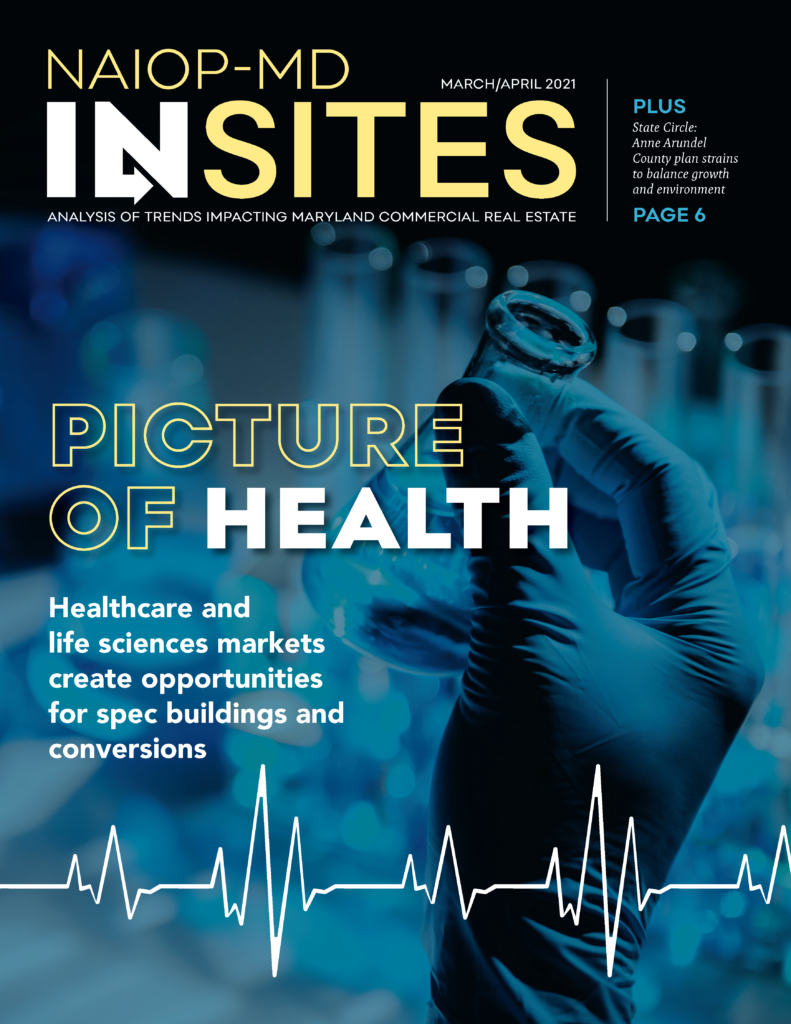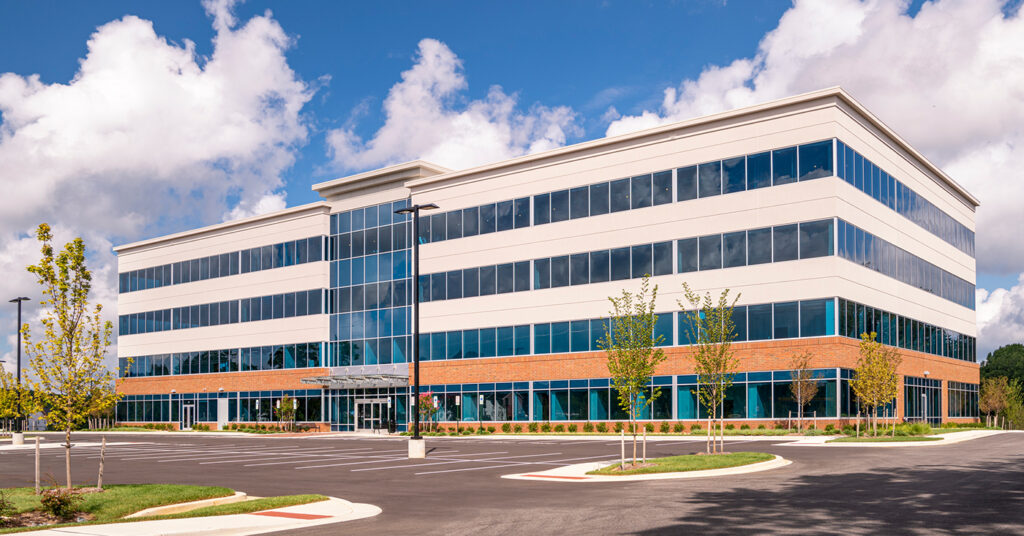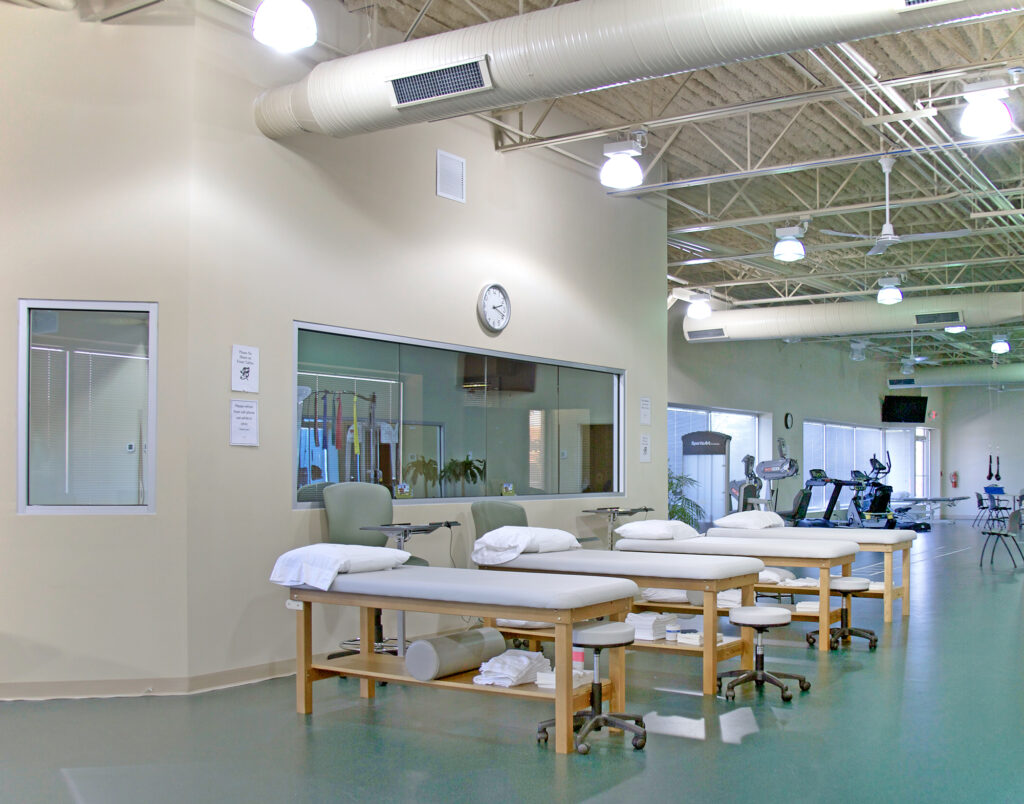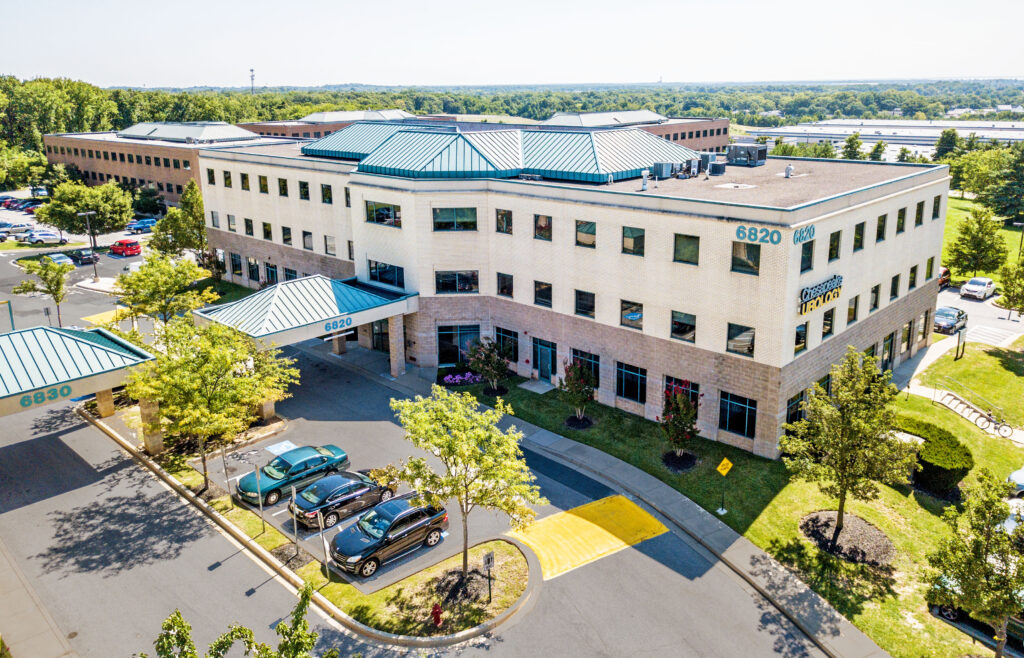
On a high-visibility site two miles from Anne Arundel Medical Center, St. John Properties’ decision to build a 100,000-square-foot, LEED Gold, state-of-the-art, medical office building on spec is paying off. In quick succession, St. John announced leases with Maryland Oncology Hematology, Chesapeake Medical Imaging, Chesapeake Urology, Kure Smart Pain Management, MedStar Medical Group, and Allergy and Asthma Management, filling 75 percent of the new building.
“The demand for high-quality medical office space continues throughout many submarkets in the region as health systems and practitioners look for community-based locations,” said Sean Doordan, Senior Vice President of Leasing and Acquisitions at St. John Properties, Inc.
The 810 Bestgate Road project exemplifies the company’s vision of how to successfully and speculatively deliver those specialized real estate products, Doordan added.
“Larger floorplates provided blank canvases for bigger users in the market,” he said. “During development, we incorporated a covered entrance and a number of life safety features in response to clients seeking to build Ambulatory Surgical Centers (ASCs), that effectively reduces tenant build-out expenses.”
And 810 Bestgate is just one example of how trends in the healthcare and life sciences sectors are generating a significant number and variety of real estate opportunities in Maryland.

The COVID-19 pandemic gave new fuel to the pre-existing trend to move more services out of hospitals and into community-based facilities which can lower costs, reduce disease spread and make healthcare services more accessible.
In its latest “Healthcare Real Estate Outlook,” JLL said two major demographic groups are also driving that segmentation of wellness and acute care in real estate. Both “millennial heads of households and the growing 65-plus demographic value preventive and personalized care” that is more readily available in community-based, outpatient facilities.
Furthermore, the 65-plus demographic will soon constitute more than 20 percent of the U.S. population and that situation will continue until after 2050, JLL noted.
“As the population gets older, you are going to see more need for urologists, radiologists, ophthalmologists, vascular specialists, orthopedic surgi-centers and other hands-on medical services that can’t be provided through a telehealth call,” said Gail Chrzan, Senior Vice President of Blue & Obrecht Realty.
Meanwhile, vacancy rates within medical office buildings are averaging around 8 percent, Chrzan said, so there are opportunities to fill newly built centers. In its healthcare outlook, JLL stressed that medical office buildings have been highly favored among investors in recent years and are positioned to remain strong investment opportunities, due to consistently low vacancy rates, low deliveries of new buildings and rising rental rates.

The growing demand for outpatient and community-based services also raises prospects of repurposing some existing properties to serve certain healthcare providers.
“I think this situation creates hope for retail space,” said Chrzan, adding that retail strips could bring basic, preventive health services, such as clinics run by nurse practitioners, to neighborhoods.
“Retail saw interest among the medical and healthcare sector pre-pandemic and we think this will continue,” Doordan said. “Medical providers often seek drive-up locations near to where patients live as well as sites that offer free parking. Junior boxes are also being subdivided to provide viable spaces.”
At the same time, Maryland’s already robust life sciences sector is growing both due to and in spite of the pandemic. The sector altered and expanded operations last year to meet challenges created by COVID-19.
For example in East Baltimore, Emergent Biosolutions Inc.’s Center for Innovation in Advanced Development and Manufacturing landed a $135 million contract to help develop and manufacture the Johnson & Johnson vaccine. In the I-270 biotech corridor, GeneDx reconfigured lab space to conduct COVID-19 tests while Vigene began working with research firms to manufacture vaccine candidates.
As the fourth largest life sciences hub in America, Maryland is well poised to participate in a major expansion of the sector nationwide.
“You probably have demand that has never been stronger in the life sciences space, not only for laboratory, wet lab and R&D space, but also increasingly for manufacturing, especially for biomanufacturing. It’s booming,” said Ian Anderson, Senior Director of Research for CBRE.
Across the country, employment in life sciences reached a record high in January, having grown 8.8 percent in the previous year, Anderson said. “It’s the strongest growth we have seen in decades for that industry.”
Furthermore, “venture capital funding to life sciences reached a new record last fall,” he said. “Money is pouring into the space… There is no indication that this is going to be stopping any time soon. Venture capital investments in the industry usually lead employment growth and hiring by about 12 to 18 months. So, for at least the next 12 to 18 months, this is going to continue to be a very strong market with very strong demand for space. With continual innovation, this will probably be a multi-year growth story.”
Real estate demands will be high in suburban Maryland, near the National Institutes of Health and existing life sciences facilities, pharmaceutical companies and medical device manufacturers, Anderson said. Demand will also be high near Johns Hopkins University, University of Maryland Baltimore County and other academic and medical institutions engaged in life sciences research and development.

“You are seeing a shift in healthcare. Hospitals are spending a lot of money in Maryland and across the country on research. It is becoming a more important part of their operations,” Chrzan said.
In addition, researchers are looking to locate next to hospital campuses to heighten collaboration between researchers and physicians, she said. “They want to create synergies where they do research in one building and treat patients in the next.”
The precise building and infrastructure requirements of life sciences operations mean that many new facilities must be newly built. However, about 75 percent of past life sciences projects in Maryland have occurred within existing buildings.
Consequently, “we are seeing conversions of existing space to meet this demand,” Anderson said. “We are seeing owners looking at the specter of reduced demand for conventional office space and looking at whether they can convert that space to laboratories.”
In the Discovery District of Prince George’s County, St. John Properties has already determined that its flex buildings can readily serve life sciences tenants.
The Discovery District “is attracting users in the life sciences based on its synergy with and proximity to the University of Maryland and a cluster of federal agencies, including USDA and FDA,” Doordan said “Accessibility to public transit like the MARC train and future Purple line offer convenience, as does the surrounding walkable retail. Our flex product is ideal for clients focused on research and innovation, which often require a combination of laboratory, R&D facilities and professional office space.”